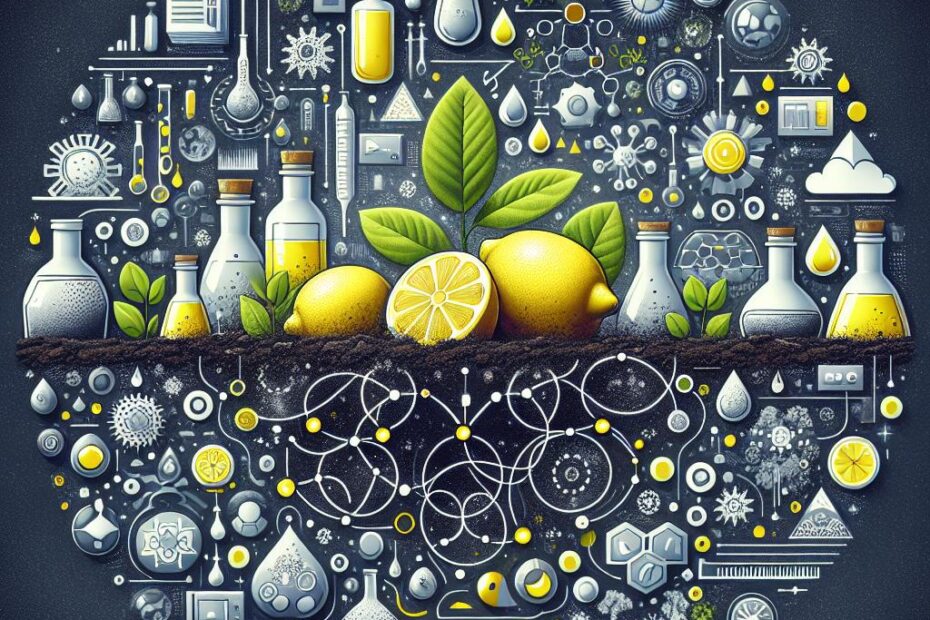Unleashing the secret behind Mother Nature’s hidden orchestra, the pH symphony of the soil, we embark on a journey to explore the art of making soil more acidic. Like an ancient alchemist unraveling the mysteries of the Earth, we delve into the transformative power of acidity, seeking to unlock its harmonious potential in our gardens and farmlands. In this humble quest, we shall uncover the methods, secrets, and ingenious techniques to embrace the acidic embrace of soil, enabling a thriving haven for plants of all kinds. So, dear reader, come forth and join us on this captivating escapade, as we reveal the hidden artistry of altering the pH of our beloved soil.
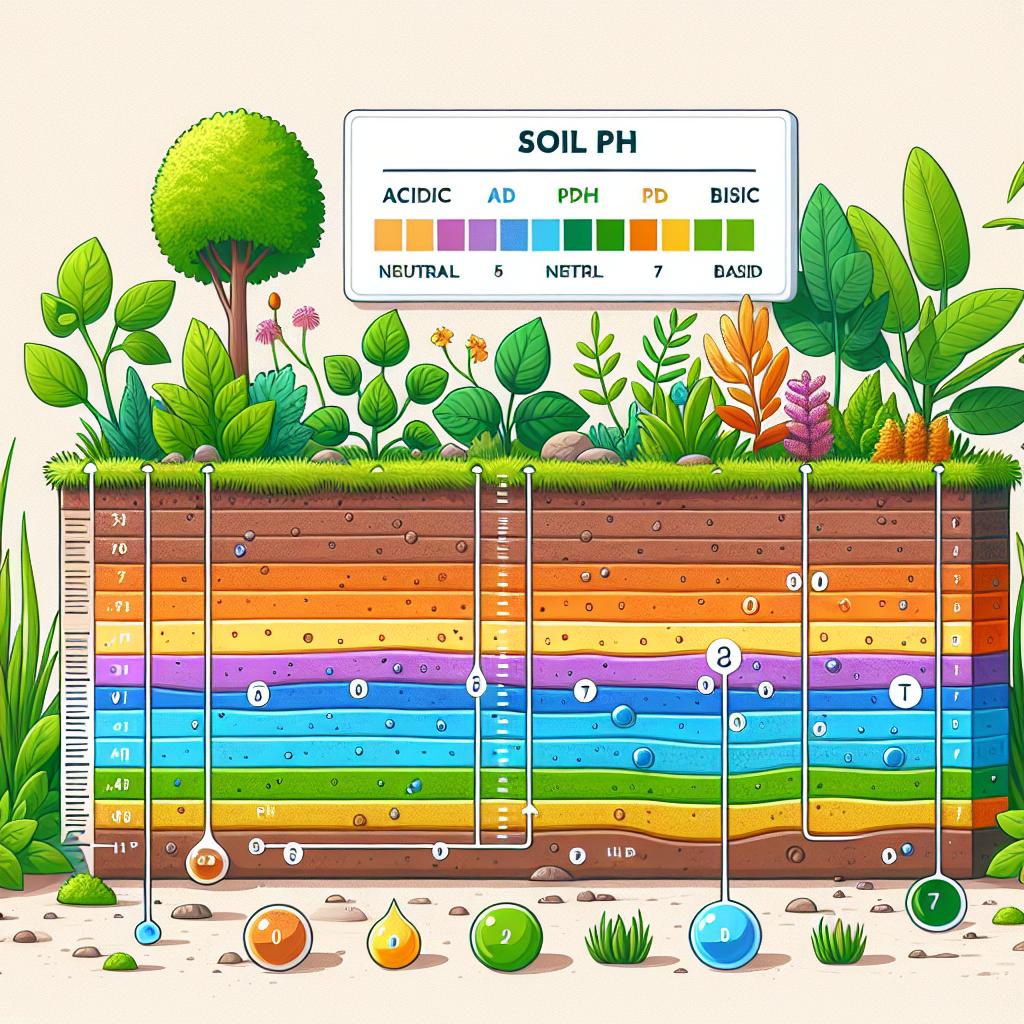
Understanding Soil pH and Acidity Levels
When it comes to gardening, is crucial for the health and success of your plants. pH refers to the level of acidity or alkalinity in the soil, and it directly affects the availability of nutrients to plants. While most plants prefer a slightly acidic soil, some may require a more acidic environment to thrive. If you find that your soil pH is too high and you need to make it more acidic, there are several methods you can try.
1. Adding Organic Matter: One effective way to make your soil more acidic is by incorporating organic matter such as peat moss, composted leaves, or coffee grounds. These materials are naturally acidic and will gradually lower the pH of your soil over time. Simply spread a layer of organic matter on top of your soil and gently mix it in using a garden fork or tiller.
| Plant | Optimal Soil pH Range |
|---|---|
| Blueberries | 4.0-5.0 |
| Azaleas | 4.5-6.0 |
| Rhododendrons | 4.5-6.0 |
2. Using Sulfur: Another method to acidify soil is by using elemental sulfur. This can be purchased in powdered form and spread evenly over the soil surface. As sulfur reacts with soil moisture and microorganisms, it contributes to the formation of sulfuric acid, which then lowers soil pH. It’s important to follow the manufacturer’s instructions and apply the correct amount based on your soil’s needs. Remember, changes in pH take time, so be patient and regularly monitor the pH levels to avoid over-acidification.
By using these methods, you can effectively make your soil more acidic and provide the ideal growing conditions for acid-loving plants. It’s always best to measure your soil pH before making any adjustments, as some plants may tolerate a slightly higher or lower pH than others. Keep in mind that maintaining a balanced pH ensures your plants receive the nutrients they need for robust growth and vibrant blooms.
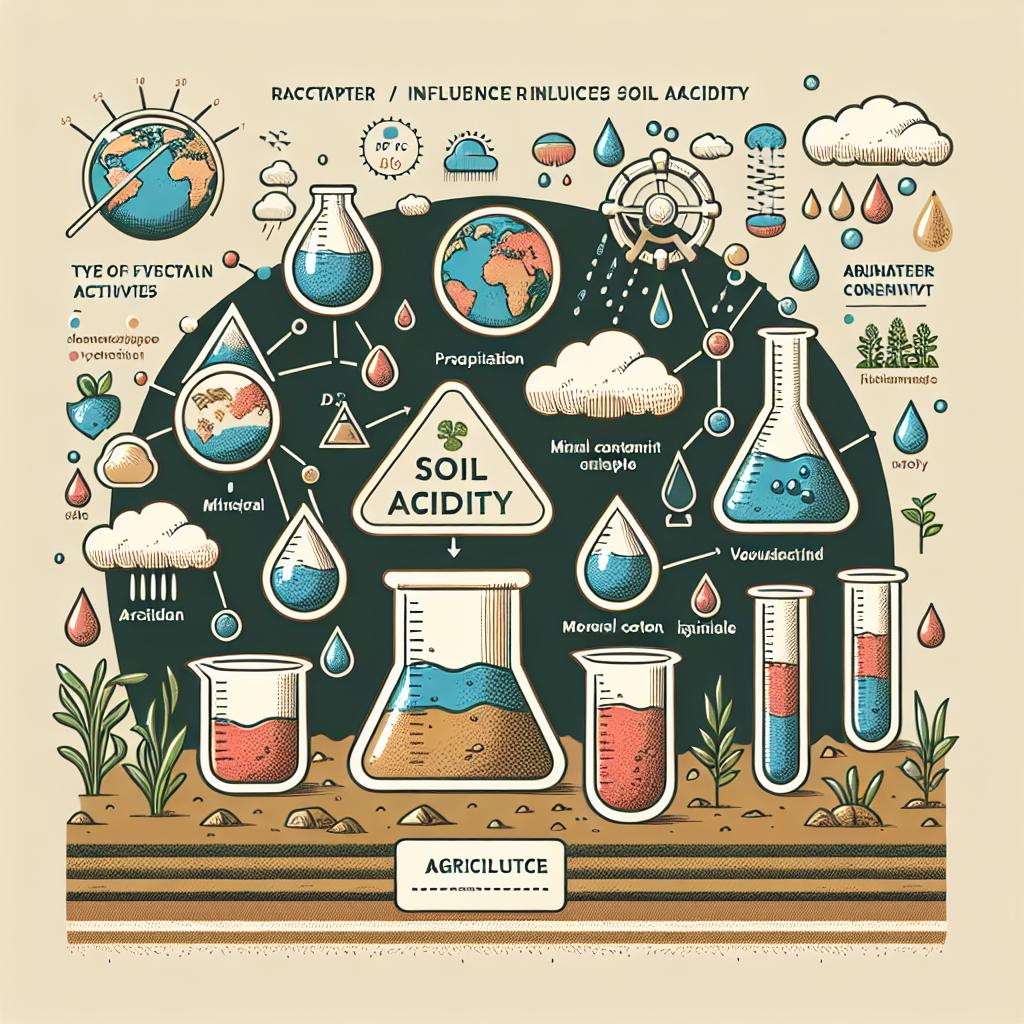
Factors Influencing Soil Acidity
Soil acidity can have a significant impact on the health and productivity of plants. If you find that your soil is not naturally acidic enough for certain plant species, there are several factors you can consider to make your soil more acidic.
1. Organic Matter: Adding organic matter to your soil can help increase its acidity. Materials such as pine needles, peat moss, and composted leaves are excellent sources of organic matter that can gradually lower soil pH levels.
2. Mulching: Applying a layer of acidic mulch around the base of plants can help maintain soil acidity. Materials like shredded bark or wood chips can slowly release organic acids as they break down, gradually lowering the pH of the soil.
In addition to these methods, it’s also important to consider the type of plants you are growing. Some plants naturally thrive in more acidic soil, while others prefer neutral or alkaline conditions. It’s essential to select plant species that are well-suited to the acidity level you are trying to achieve. By taking these factors into account and making adjustments accordingly, you can successfully alter your soil’s acidity and create an ideal environment for the plants you want to grow.

Importance of Adjusting Soil pH for Optimal Plant Growth
Adjusting soil pH is vital for optimal plant growth. The acidity or alkalinity of the soil directly affects a plant’s ability to absorb essential nutrients. By making the soil more acidic, you can create an environment that favors the growth of certain acid-loving plants, such as blueberries, rhododendrons, and azaleas.
One way to make soil more acidic is by incorporating organic matter into it. Adding materials like peat moss, pine needles, or compost can help lower the pH level of the soil. These organic materials release acids as they break down, creating a more acidic environment for the plants. Additionally, you can use garden sulfur to further adjust the pH. It is important to regularly test the soil pH to ensure that it remains within the desired range for the acid-loving plants to thrive.
| Acid-Loving Plants | Soil pH Range |
|---|---|
| Blueberries | 4.0-5.0 |
| Rhododendrons | 4.5-5.5 |
| Azaleas | 5.0-6.0 |
It is important to note that not all plants prefer acidic soils, and altering the pH should be done with care, taking into consideration the specific needs of the plants and the existing soil composition. By adjusting the soil pH, you can create an ideal environment for your acid-loving plants, ensuring that they receive the necessary nutrients for healthy growth and abundant blooms.

Identifying Acid-Loving Plants for Acidic Soil
When it comes to gardening, one of the most important factors to consider is the pH level of your soil. Some plants thrive in acidic soil, while others prefer a more neutral or alkaline environment. If you’re looking to grow acid-loving plants, it’s crucial to make sure your soil is adequately acidic. This post will provide you with some tips and tricks on how to make your soil more acidic, enabling you to cultivate a beautiful garden filled with vibrant and healthy acid-loving plants.
1. Use organic matter: Incorporating organic matter into your soil can help increase acidity. Materials such as pine needles, sawdust, and peat moss are excellent additions that can naturally lower the pH level.
2. Apply sulfur: Sulfur is a fantastic element that can enhance acidity in your soil. You can either use elemental sulfur or agricultural sulfur to lower the pH level gradually. Be sure to follow the recommended application rate, as excessive sulfur can harm acid-sensitive plants.
| Type of Acid-Loving Plant | Optimal pH Range |
|---|---|
| Azaleas | 4.5-6.0 |
| Rhododendrons | 4.5-6.0 |
| Blueberries | 4.0-5.0 |
By following these simple steps, you can transform your soil into an acidic haven for your favorite acid-loving plants. Remember to regularly monitor the pH level and adjust accordingly to meet the specific requirements of different species. Happy gardening!
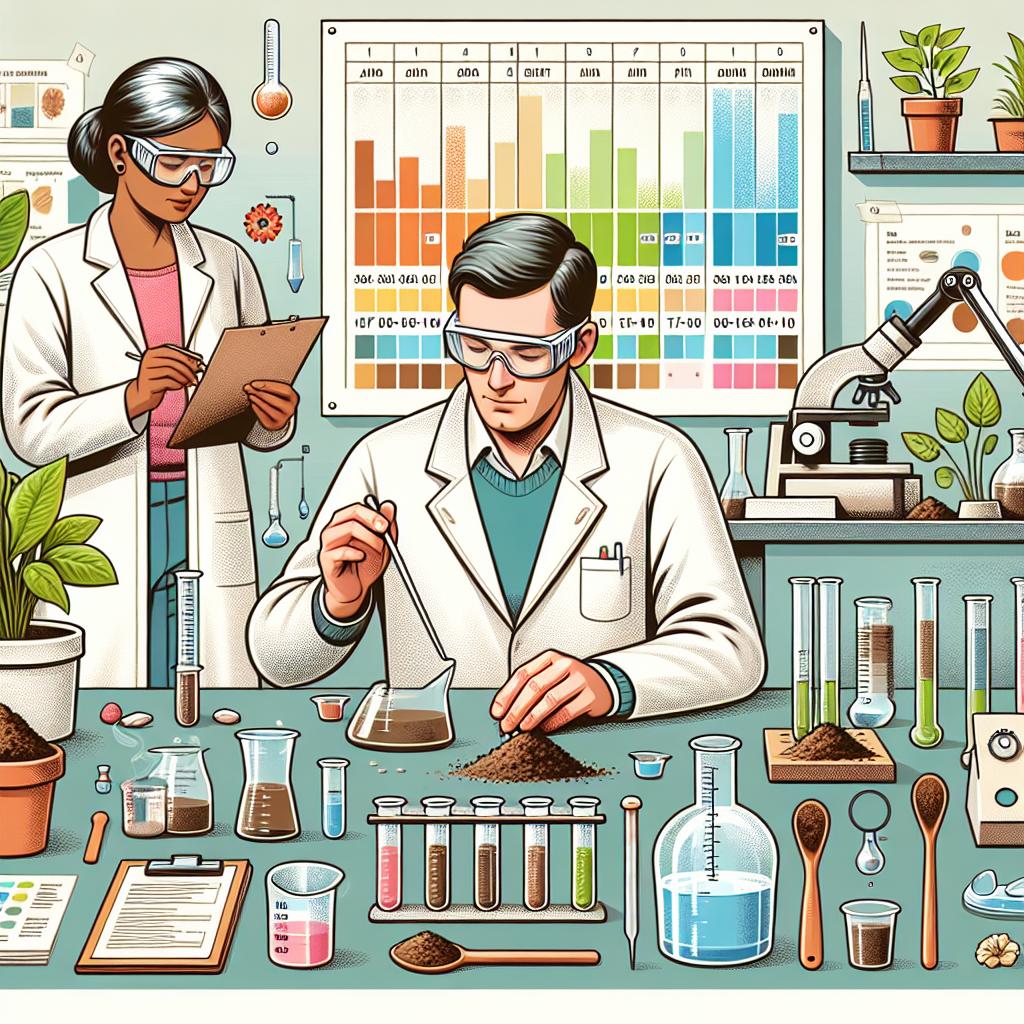
Testing Soil pH: Methods and Tools
When it comes to gardening, understanding and managing the pH level of your soil is crucial for the health and success of your plants. Whether you want to grow vibrant flowers or a fruitful vegetable garden, finding the right balance between acidity and alkalinity can make all the difference. Testing your soil’s pH can be done using various methods and tools, ensuring that you have accurate readings to guide your gardening efforts. Here are a few methods and tools that can help you determine and adjust the pH level of your soil:
-
- Soil Testing Kits: These handy kits contain everything you need to measure your soil’s pH. They typically include a test tube, testing solution, color chart, and instructions. Simply collect a soil sample, add the solution, and compare the resulting color to the chart to determine the pH level.
-
- Digital pH Meters: For a more precise and convenient option, digital pH meters are a great tool. With their electrodes, you can directly measure the pH level of your soil. Just insert the probe into the soil, wait for a stable reading, and record the results.
-
- Soil pH Probes: These handheld devices are specifically designed for soil testing. With their sharp tip, you can easily penetrate the soil and obtain a sample. Insert the probe into the ground, and the device will display the pH level instantly.
Remember, the pH level of your soil plays a significant role in nutrient availability to your plants. So, whether you need to make your soil more acidic or alkaline, testing the pH level regularly is vital. By using reliable methods and tools, you can ensure a healthy environment for your beloved plants to thrive.

Natural Ways to Make Soil More Acidic
There are several natural and effective ways to make your soil more acidic, ensuring optimal growth for acid-loving plants. Creating an acidic soil environment can be beneficial for plants such as azaleas, camellias, blueberries, and rhododendrons. Here are some tried-and-true methods:
-
- Incorporate Organic Materials: Adding organic materials like pine needles, peat moss, or oak leaves to your soil can gradually increase its acidity level.
-
- Use Coffee Grounds: Don’t throw away those used coffee grounds! Simply sprinkle them around the base of acid-loving plants to slightly increase the soil’s acidity.
-
- Mulching with Pine Bark: Apply a layer of pine bark mulch around the plants. As it slowly decomposes, it releases organic acids that can acidify the soil.
-
- Applying Elemental Sulfur: Applying elemental sulfur is a more direct and immediate method to lower soil pH. However, it is crucial to follow the instructions carefully to avoid over-acidifying the soil.
For a quick reference on the effectiveness and potential pH changes these methods can achieve, here’s a handy table:
| Method | pH change |
|---|---|
| Incorporate Organic Materials | Gradual decrease over time |
| Use Coffee Grounds | Slight decrease |
| Mulching with Pine Bark | Gradual decrease over time |
| Applying Elemental Sulfur | Immediate decrease |
Remember, before making significant adjustments to your soil’s pH, it’s essential to conduct a soil test to determine its current acidity level. Aim for a pH within the specific range recommended for your desired plants. By following these natural methods, you’ll be on your way to creating the perfect acidic environment for your acid-loving botanical beauties!
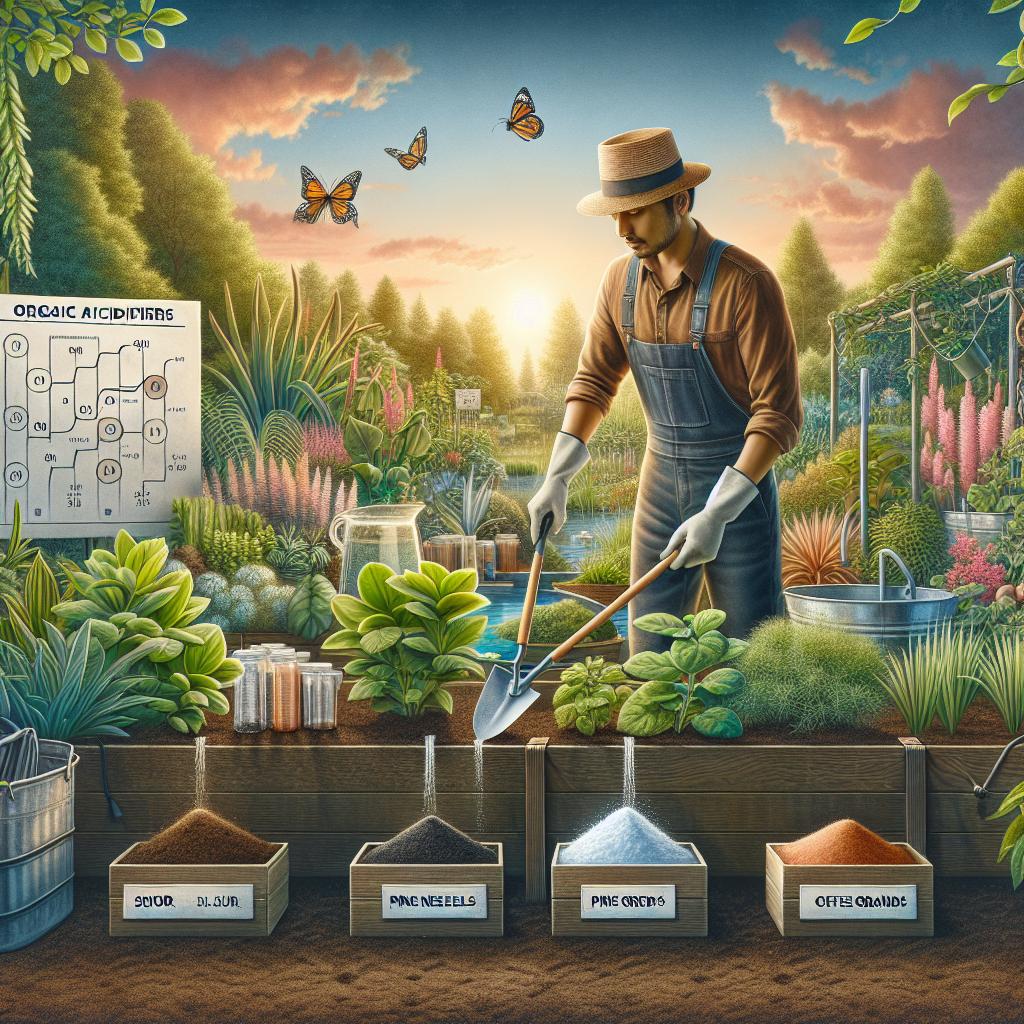
Amending Soil with Organic Acidifiers
When it comes to gardening and growing certain types of plants, achieving the right soil pH level is essential. Some plants thrive in acidic conditions, while others prefer a more neutral or alkaline environment. If you find that your soil is too alkaline and you need to make it more acidic, organic acidifiers can come to your rescue.
Organic acidifiers are natural substances that help lower the pH level of your soil, making it more acidic. By adding these acidifiers to your soil, you can create a better environment for acid-loving plants such as azaleas, blueberries, and rhododendrons. Not only do they help plants grow healthier, but they also enhance the absorption of nutrients and positively influence microbial activity within the soil.
To make your soil more acidic, consider incorporating the following organic acidifiers into your gardening routine:
-
- Peat Moss: This highly effective acidifier not only lowers the soil pH but also improves its overall structure and moisture retention.
-
- Sulfur: Sulfur is a popular choice for acidifying soil as it gradually releases sulfuric acid when it comes into contact with water and soil microorganisms.
-
- Green Sand: Obtained from ancient marine deposits, green sand contains valuable minerals and iron that can help lower soil pH.
-
- Vinegar: Though not commonly recommended, diluted white vinegar can be used sparingly as a quick fix to temporarily lower soil pH. However, be cautious as excessive use may result in harmful effects on beneficial soil microorganisms.
| Acidifier | Effectiveness | Recommended Usage |
|---|---|---|
| Peat Moss | High | Apply 2-3 inches as a top dressing or incorporate into the soil. |
| Sulfur | Moderate to High | Follow package instructions for proper application rates. |
| Green Sand | Low to Moderate | Apply approximately 10-20 pounds per 100 square feet. |
Before using any organic acidifier, it’s important to conduct a soil pH test to determine the current acidity level. This will help you identify the appropriate amounts of acidifiers needed to achieve your desired pH. Remember to wear proper protective gear, follow instructions carefully, and avoid over-application, as excessively acidic soil can also harm plants. With the right organic acidifiers and a bit of patience, you can easily create an ideal acidic environment for your acid-loving plants to thrive.

Using Sulfur to Increase Soil Acidity
Sulfur is a commonly used element in gardening to increase soil acidity. By adding sulfur to your soil, you can help create optimal growing conditions for acid-loving plants, such as blueberries, azaleas, and rhododendrons. This method is especially useful for gardeners who are looking to grow these plants in non-acidic or neutral soils.
One of the main benefits of is its ability to lower the pH level of the soil. This is important because many acid-loving plants thrive in soil with a pH level between 4.5 and 5.5. Sulfur gradually acidifies the soil over time, providing a long-lasting solution to maintaining optimal pH levels for these plants.
When using sulfur, it’s important to keep in mind a few key factors:
-
- Calculate the correct amount of sulfur needed based on your soil’s pH level and the desired pH level for your specific plants.
-
- Apply the sulfur evenly across the soil surface, avoiding direct contact with plant roots.
-
- Avoid over-application of sulfur, as too much acidity can be detrimental to certain plants.
By , you can enjoy a thriving garden filled with beautiful, healthy acid-loving plants. Remember to monitor your soil’s pH level regularly and adjust sulfur application as necessary to ensure optimal growing conditions for your plants.

Best Practices for Acidifying Soil in Gardens and Landscapes
When it comes to achieving optimal conditions for your plants, ensuring the right pH balance in your soil is crucial. In many cases, plants require slightly acidic soil to thrive and reach their full potential. If you find that your soil is too alkaline, fear not! There are several tried and true methods to make your soil more acidic, giving your garden the perfect environment for lush growth and vibrant blooms.
Beware of Over-Acidification
Before diving into the tips and tricks for acidifying your soil, it’s important to strike a balance. While some plants thrive in acidic conditions, others may not tolerate highly acidic soil. Always research the specific needs of your plants and aim for the ideal pH range. Over-acidification can have detrimental effects on plant health, hindering nutrient absorption and causing root damage.
Natural Acidifiers
One of the most effective ways to acidify your soil naturally is by using organic materials. Incorporating acidic matter such as peat moss, oak leaves, pine needles, or coffee grounds into your soil can gradually lower its pH over time. These materials provide a slow-release acidity that nourishes your plants without shock. To make the most of these natural acidifiers, mix them into your soil before planting or use them as mulch around your existing plants.
Chemical Acidifiers
If you are looking for a quicker solution to adjust the pH of your soil, chemical acidifiers can be used. Some common chemical acidifiers include aluminum sulfate and sulfur. These acidifiers should be used with caution and in the recommended quantities, as excessive use can harm your plants or lead to nutrient imbalances. It’s best to conduct a soil test beforehand to determine the exact amount of acidifier needed for your specific soil conditions.
Monitoring pH Levels
Regularly monitoring the pH levels of your soil is essential to maintain a healthy garden. A simple and efficient way to do this is by using pH testing kits or meters. By regularly checking and adjusting the pH as needed, you can ensure that your plants are receiving the optimal conditions for growth. Remember to follow the specific instructions provided with the testing kit to make accurate measurements.
Taking Care of Acid-Loving Plants
Now that you’ve successfully acidified your soil, let’s discuss the care of acid-loving plants. These plants thrive in the newly acidic environment but still require proper maintenance. Ensure they receive adequate sunlight, water consistently, and provide appropriate nutrients. Additionally, consider incorporating organic matter into the soil periodically to maintain the desired acidity level and support the long-term health of your acid-loving plants.
Q&A
Q: Is your garden lacking that acidic kick? Can’t get those plants to thrive? Well, fear not! Today, we’re here to help you turn your soil into an acidic paradise. So grab a cup of coffee, put on your gardening gloves, and join us on this journey to make your soil more acidic!
Q: Why would I want to make my soil more acidic?
A: Great question! Some plants prefer acidic soil as it provides them with essential nutrients, improves their overall health, and leads to vibrant and colorful blooms. If you have plants like azaleas, blueberries, camellias, or rhododendrons, making your soil more acidic is a game-changer for them.
Q: How do I know if my soil needs to be more acidic?
A: Ah, the pH factor! Soil pH determines its acidity or alkalinity on a scale from 0 to 14. Neutral soil lies around 7, but if your plants are struggling, you might have alkaline soil (pH 7+) that needs an acidic boost.
Q: What are some natural ways to make soil more acidic?
A: Mother Nature has got your back! Here are a few creative and natural methods to lower that pH level:
1. Epsom Salt- Mix a tablespoon of Epsom salt into a gallon of water and apply it to your garden. Magnesium sulfate in Epsom salt helps to trigger acidity.
2. Coffee Grounds- Save those leftover coffee grounds and sprinkle them around your plants. They provide organic matter and acidity as they decompose.
3. Pine Needles- Spread a thick layer of pine needles around your plants. As they decompose, they release acidity and create a perfect acidic environment.
4. Vinegar- Dilute vinegar with water (1:8 ratio) and use it as a soil drench. Vinegar’s acetic acid content gently acidifies your soil.
Q: Can I use chemical products to make soil more acidic?
A: While there are chemical products available, we always encourage an eco-friendly approach. Natural methods not only help maintain soil health but also avoid potential harm to beneficial organisms. However, if you choose to use chemicals, remember to use them responsibly and according to the manufacturer’s instructions.
Q: Will making my soil more acidic harm other plants or affect the ecosystem?
A: As with any gardening endeavor, balance is everything. Some plants thrive in more alkaline soil, so it’s essential to assess your garden’s needs. Use these methods exclusively for acid-loving plants or as spot treatments. By doing so, you can enjoy the benefits without disrupting the harmony in your garden.
Q: How often should I apply these methods to maintain acidic soil?
A: The frequency of applying these methods largely depends on your soil type and the plants you’re growing. Perform a pH test periodically to monitor the levels, and adjust accordingly. Keep in mind that soil amendments take time to show their effects, so be patient and observe your plants’ responses.
Q: Are there any other tips to help my acid-loving plants thrive?
A: Absolutely! In addition to creating an acidic soil environment, consider factors like proper watering, mulching, and using organic fertilizers. These practices help create optimal conditions for your acid-loving plants, ensuring their sustained health and vibrancy.
Now armed with this knowledge, go forth, dear gardeners, and transform your soil into an acidic oasis. Enjoy the bounty of your acid-loving plants and marvel at their newfound vitality! Happy gardening!
Key Takeaways
As we delve deeper into the secrets of gardening and nurturing mother nature’s bounty, we find ourselves at the end of this enlightening journey to make soil more acidic. We have unearthed the magic hidden within the realms of pH levels, the subtle dance of chemistry, and the power we possess to transform our gardens into vibrant and thriving ecosystems.
With newfound knowledge and a touch of creativity, you can now embark on a quest to tailor your soil’s acidity to your heart’s desire. Whether you dream of a flourishing blueberry patch, the perfect hydrangea garden, or simply wish to give your soil a gentle boost, the tools and techniques presented here have laid the foundation for your green-fingered adventures.
Remember, like a conductor leading an orchestra, maintaining soil acidity is an ongoing process that requires regular monitoring and fine-tuning. Patience, perseverance, and a little courage will guide you towards your horticultural masterpiece.
Imagine the joy of strolling through a garden adorned with radiant blooms and lush vegetation—all thanks to the delicate balance you have achieved in delivering the perfect acidity to nourish your flora. Celebrate the wonders of nature and revel in the satisfaction of being an accomplice to its harmonious symphony.
So, my fellow gardeners, go forth armed with the wisdom you have gained, armed with a vision, and armed with a watering can of determination. There is a world of possibilities waiting to be unlocked beneath the surface of your garden beds. Embrace the transformative power of making soil more acidic and watch as your beloved green sanctuary flourishes like never before.
As we conclude this odyssey through the acidic underworld of gardening, let the soil be your canvas, the plants your masterpieces, and the natural world your guide. Unleash your inner alchemist and let the magic of a well-adjusted pH sprinkle its enchantments, transforming your garden into a breathtaking tapestry of color, vibrancy, and life.
Farewell, dear readers, and may your soils be forever balanced and your gardens forever blessed.
